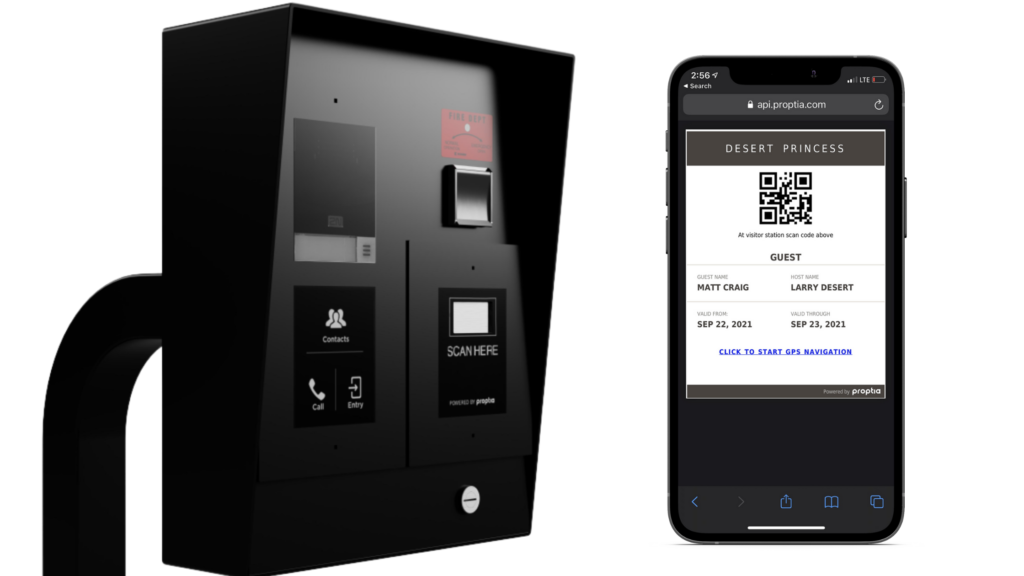Securing your gated community from unwanted visitors is an important responsibility of any property manager. With the proper security measures, you protect the lives of your residents, as well as their property. There are three basic controls property managers should put in place to protect their gated community: secure internal controls, perimeter security, and community access. Community access control systems, in particular, act as your electronic gatekeeper, checking visitors in and out of the neighborhood.
In this article, we discuss how access control systems help the community, what features you should choose, and why you should consider adding a visitor processing kiosk as well.
How do community access control systems prevent unwanted guests?
Community gate access control systems are often installed for the sole purpose of preventing unauthorized entry. Still, you can use them to grant access to residents and visitors through various areas of the property. Once installed in a community, these systems can limit who can and cannot enter by either requiring a credential assigned to each specific resident or visitor. Because they restrict access, they prevent unauthorized people from entering your property.
Access control systems are typically made up of five parts:
- Credentials – a device that stores data (e.g., key fobs, remote controls, proximity cards, smartphone, transponder)
- Readers/Inputs – determines that an event has taken place for example a transponder or smartphone was scanned and then sends this message to the controller
- Controller or Control Panel – the brains of the system. Determines how to react based on what was read by the reader and what message to send to the door or gate. They send this message using what’s called Outputs
- Relay Outputs – receives message from the controller and tells a door or gate what to do for example open or close or lock or unlock
- Software – stores a central database of authorized users, access levels, and their credentials. Software is used to configure how all the previous components on this list should work.

What type of gated community access control systems should you get?
If you are looking for top-notch security, choose a system that gives you full control and ability to configure on the components previously discussed in this article. Not only that but it should also be easy to use! Secondly one of the weak spots with an access control system are the credentials. In the past credentials such as fobs and proxy cards could be easily cloned and duplicated just like a physical key. Look for a system with credentials that are OSDP Compliant and non-cloneable. Lastly, universal access codes can be a huge security risk. Because if every Aunt Suzy, delivery guy, house cleaner, and guest can come in by punching in 123456, you make yourself and your community vulnerable to unauthorized entry. You can’t control who these people share the code with. Ideally, your gated community access control software should also be equipped to offer time-based restrictions, meaning codes are valid only for a certain amount of time and then are erased and new ones generated.
Should you install a visitor processing kiosk as part of your security gate systems for gated communities?
Combining a self-service visitor processing kiosk with an excellent access control system will ensure residents control when visitors are in the community. Using a mobile app, they can issue ePasses to visitors and grant them one-time or multiple entry access. Visitors simply need to scan this ePass on the self-service kiosk, and the resident will be notified through SMS that their guest has arrived.

What type of community access control systems do you really need?
Gated communities have different requirements when it comes to community access control solutions. If you’re unsure about what you need, get in touch with our Proptia sales team and learn about our suite of security solutions for your gated community. Strengthen your current security measures and get peace of mind by scheduling a demo with Proptia today.

